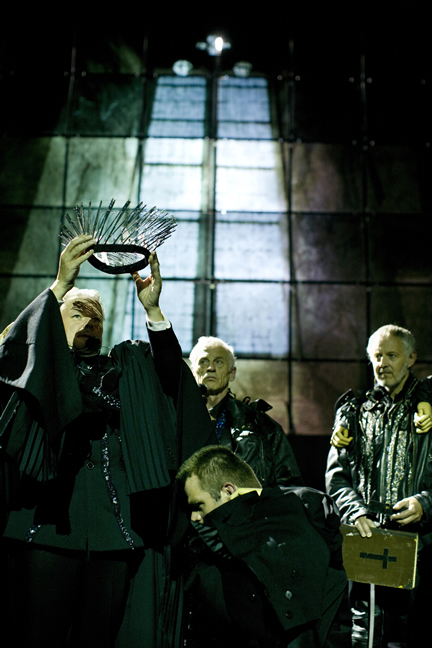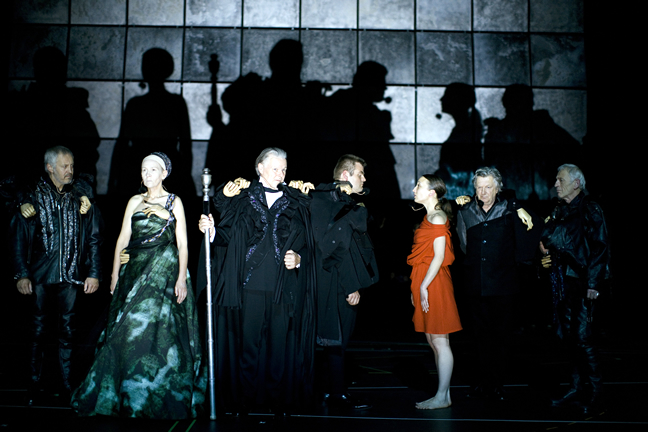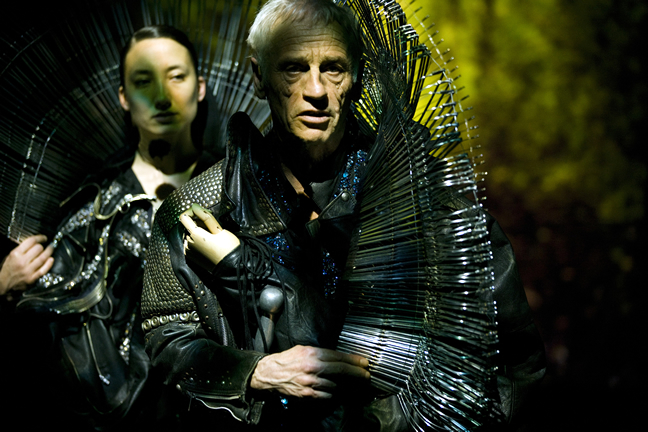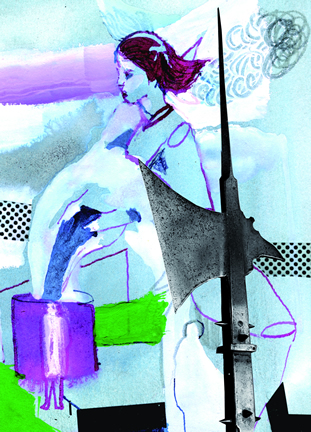Predictions, a miraculous sword, apparitions, invocations to the devil...
Tom Lanoye
Born in 1960 Guy Cassiers ranks among the main artists who have communicated to the current Flemish stage its extraordinary vitality and its international audience. Cassier is a past master in the use of video, knowing how to avoid its decorative traps, and his work in stage sound settings imparts an unforgettable texture and presence to the voices of his performers. For several seasons now his shows have examined the complex relationships among art, politics and power, with the support of remarkable actors and actresses – Cassier is renowned as a superb acting director – and of works, often from novels, which display his predilection for modern or contemporary writing: over the course of the years Cassiers has explored a vast European repertoire, forming a sort of historical self-portrait of the continent, which goes from Jeroen Brouwers to Malcolm Lowry, from Marcel Proust to Robert Musil. Among the noteworthy stages of the investigation pursued by Cassiers, the Triptych of Power, presented at the Avignon Festival, occupies an eminent position. Its first and last wings, respectively adapted from Klaus Mann and Aeschylus, Euripides, Bush, Rumsfeld and Malaparte, are the work of Tom Lanoye, one of the most inventive, and most translated Flemish authors of his generation. After together having focused their attention on the political and military dimensions of power, Cassiers and Lanoye here examine its religious and juridical forms. In Bloed & Rozen (Blood and Roses) they explore one of the most mysteriously antithetical couples of history, that formed by the little Joan “whom the English burned in Rouen” and her companion in arms Gilles de Rais, nobleman and Marshal of France. For Lanoye “Both are unique phenomena in an exceptionally troubled period. Both entered into open conflict with the Church – Joan by affirming that she received orders directly from God, without clerical intercession; Gilles by seeking contact with the devil and entering a small church armed – and both will lose the battle. Both are remarkable exceptions in their environment, while at the same time their entire identity rests on that environment. Joan: daughter of the people – but who remains a virgin and is also a soldier. Gilles: an aristocrat – but a homosexual – who quickly exchanges his military fame for that of a spendthrift and a ceremonial baron, rather than remain a politician or a courtier; he closets himself more and more in the isolation of carnage, alchemistical rituals, satanic invocations, gaudy processions, holy masses with much singing from choirs, binges…” The unconventional figures of Joan and Gilles are, for Cassiers and Lanoye, the occasion to examine certain obscure mechanisms inherent in a religious psyche (be it superstitious or fundamentalist) which still, six centuries after the Hundred Years War, displays to us its sinister reflection.
Cast
Het lied van Jeanne en Gilles [The Song of Joan and Gilles]
in Dutch, with overhead French titles
by Tom Lanoye
directed by Guy Cassiers
February 8th – 12th, 2012
Théâtre de l'Odéon / 6e
French Translation : Alain van Crugten
Dramaturgy : Erwin Jans
Scenography : Guy Cassiers, Enrico Bagnoli & Ief Spincemaille
Lights : Enrico Bagnoli
Costumes : Tim van Steenbergen avec Mieke van Buggenhout
Music : Dominique Pauwels
Sound : Diederik de Cock
Video : Ief Spincemaille
With Katelijne Damen, Stefaan Degand, Abke Haring, Han Kerckhoffs, Johan Leysen, Johan van Assche, Jos Verbist
Singing Collegium Vocale Gent
production Toneelhuis
coproduction Festival d'Avignon, les Théâtres de la ville de Luxembourg, de Tijd, Collegium Vocale Gent, deSingel
Created on May 26th, 2011 at the Toneelhuis (Théâtre Bourla) – Anvers (Belgium)
,





